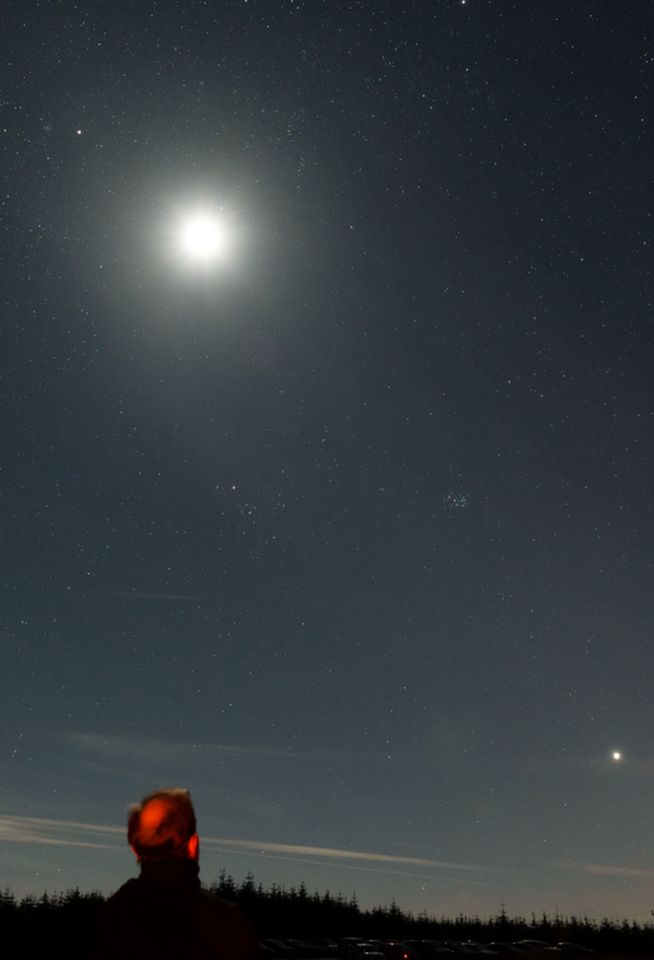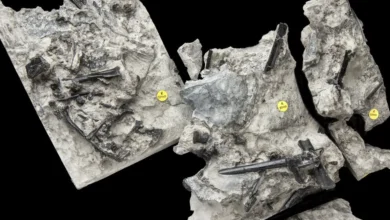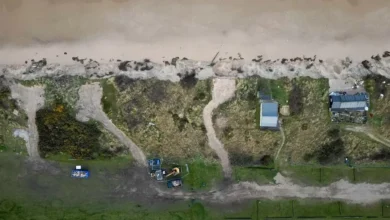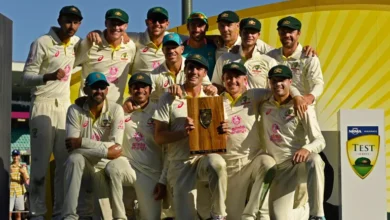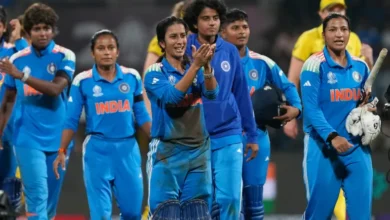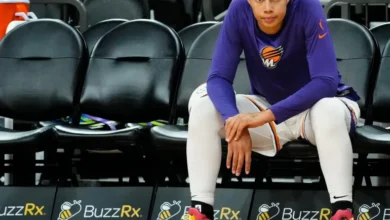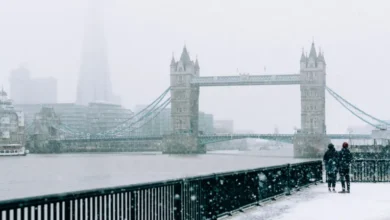Five planets line up with Moon in night sky
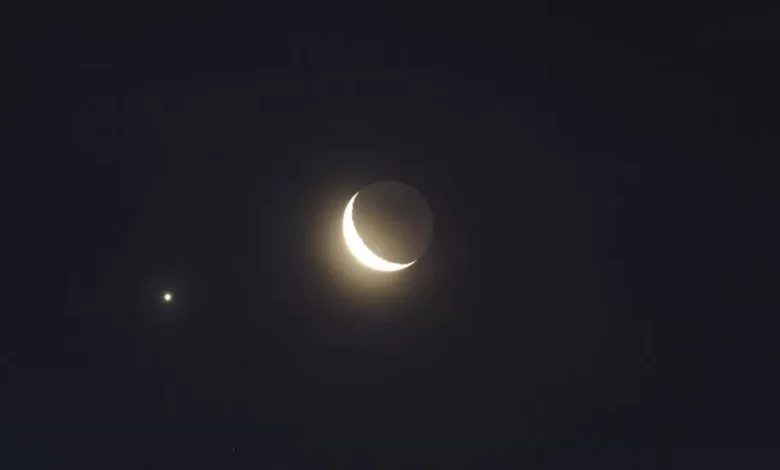
Mercury, Jupiter, Venus, Uranus, Mars, and the Moon aligned in an arc across the evening sky on Monday, with some visible to the naked eye.
This is often called “a planetary parade” and was visible after sunset in the west.
A good view of the horizon and clear skies offered the best chance of spotting the alignment.
Last summer Mercury, Venus, Mars, Jupiter, and Saturn came together in a rare planetary conjunction.
The best shot at spotting the planets on Monday was away from any bright city lights, somewhere with a clear, unobstructed view.
You needed to be observing early in the evening because Mercury and Jupiter quickly disappeared over the horizon.
Some of the best views were from northern parts of Scotland and its islands because of clear skies.
Prof Catherine Heymans, the Astronomer Royal for Scotland, watched the spectacle from Edinburgh’s Portobello beach.
“Planet spotting on a crystal clear night along with so many other planetary parade enthusiasts was an absolute delight!” she said.
Allow Twitter content?
This article contains content provided by Twitter. We ask for your permission before anything is loaded, as they may be using cookies and other technologies. You may want to read Twitter’s cookie policy, external and privacy policy, external before accepting. To view this content choose ‘accept and continue’.
Astronomer Jake Foster from Royal Observatory Greenwich said such alignments were very particular to our perspective from Earth.
“The planets aren’t aligned right now, they are all spread out across the Solar System but just from our perspective, every once in a while they get close enough to each other in the sky that we’re able to see quite a few at once,” he said.
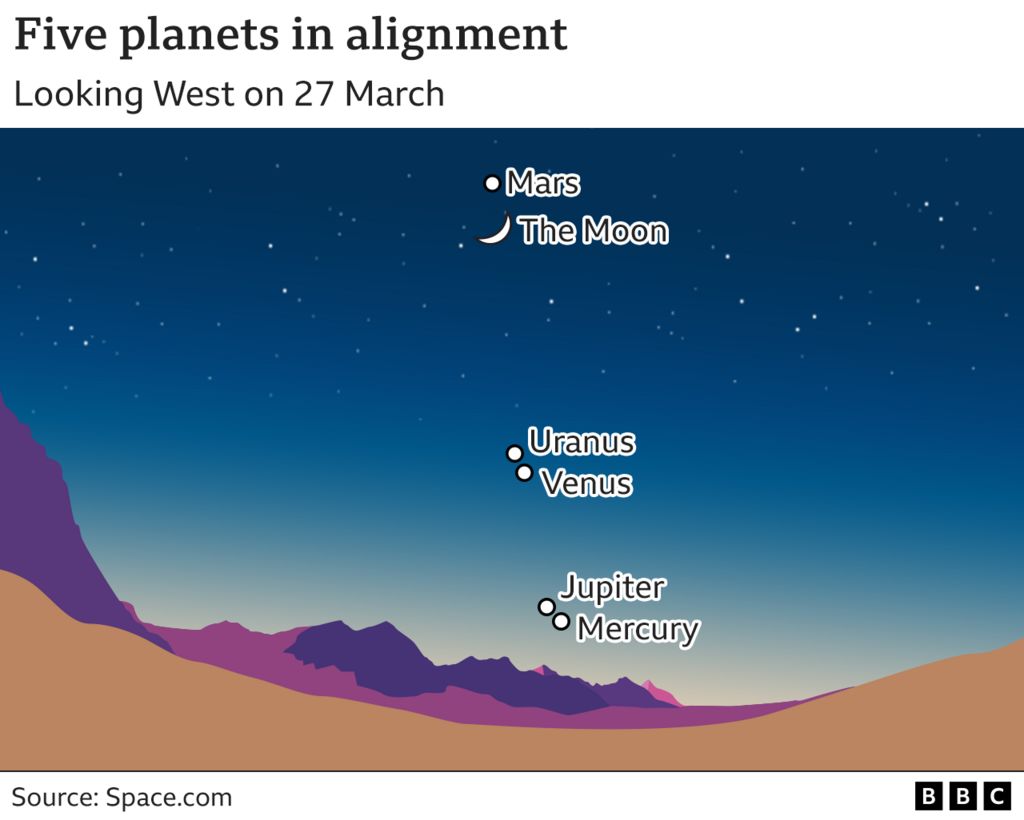
Anglesey, north Wales, has some of the darkest skies in Europe.
Ynys Enlli (Bardsey Island), off the Llŷn Peninsula, has become the first site in Europe to be awarded International Dark Sky Sanctuary certification.
Speaking from Anglesey, Dani Robertson, the dark skies officer for North Wales, said the evening had been a visual treat despite a light cloudy haze.
“I’m in my back garden and I can see a very nice little crescent Moon, to the top left and just above it I can see Mars, which has a lovely red glow, and a bit lower towards the horizon there’s a really bright light and that’s Venus,” she said.
“If it were clearer, I could see all of it, the only one you wouldn’t be able to see is Uranus, you’d need a telescope.”
In Hexham, near the border with Scotland, Dan Pye from the Kielder Observatory said seeing the planets in alignment offered perspective about our place in the solar system.
He said: “Over the course of the night the distance between these objects shifts as the moon goes around us, we move a little further around the sun, and the planets continue their journeys around the sun.
“I think witnessing this, helps you realise that connection we have to the cosmic ballet we have with other objects in just our very local space theatre.”
Ms Robertson, an amateur astronomer, said that 98% of people in the UK lived under polluted skies.
“It’s a shame because that’s our home galaxy, another part of being human that is being denied to lots of people,” she said.
“When we look at the night sky, things like Taurus, the Pleiades, the Moon, they’ve been the same for the whole of human existence.”
But she said that unlike other types of pollution, this one was relatively easy to fix permanently.
“Once we’ve fixed a light to make dark skies, that’s the problem solved.”
